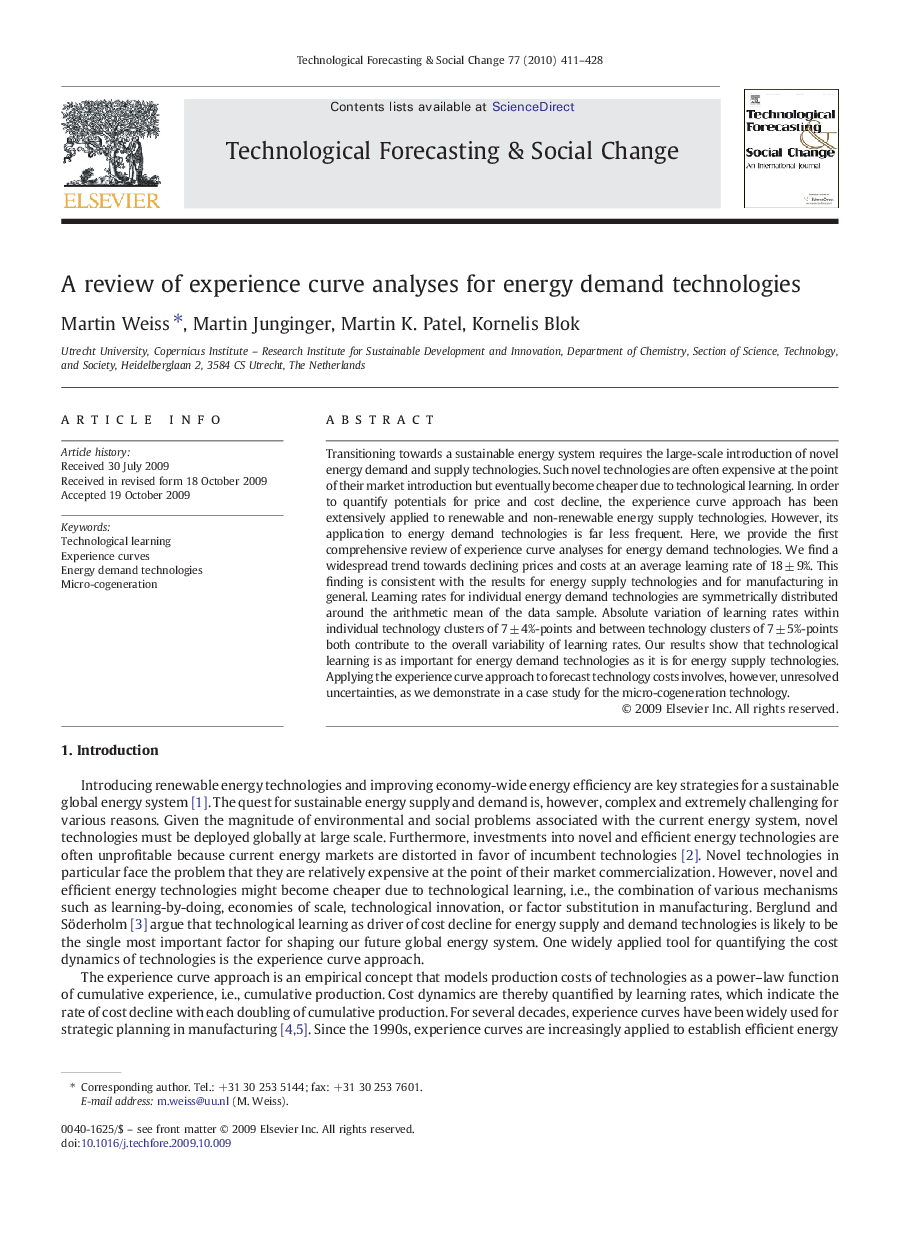| Article ID | Journal | Published Year | Pages | File Type |
|---|---|---|---|---|
| 896949 | Technological Forecasting and Social Change | 2010 | 18 Pages |
Transitioning towards a sustainable energy system requires the large-scale introduction of novel energy demand and supply technologies. Such novel technologies are often expensive at the point of their market introduction but eventually become cheaper due to technological learning. In order to quantify potentials for price and cost decline, the experience curve approach has been extensively applied to renewable and non-renewable energy supply technologies. However, its application to energy demand technologies is far less frequent. Here, we provide the first comprehensive review of experience curve analyses for energy demand technologies. We find a widespread trend towards declining prices and costs at an average learning rate of 18 ± 9%. This finding is consistent with the results for energy supply technologies and for manufacturing in general. Learning rates for individual energy demand technologies are symmetrically distributed around the arithmetic mean of the data sample. Absolute variation of learning rates within individual technology clusters of 7 ± 4%-points and between technology clusters of 7 ± 5%-points both contribute to the overall variability of learning rates. Our results show that technological learning is as important for energy demand technologies as it is for energy supply technologies. Applying the experience curve approach to forecast technology costs involves, however, unresolved uncertainties, as we demonstrate in a case study for the micro-cogeneration technology.
